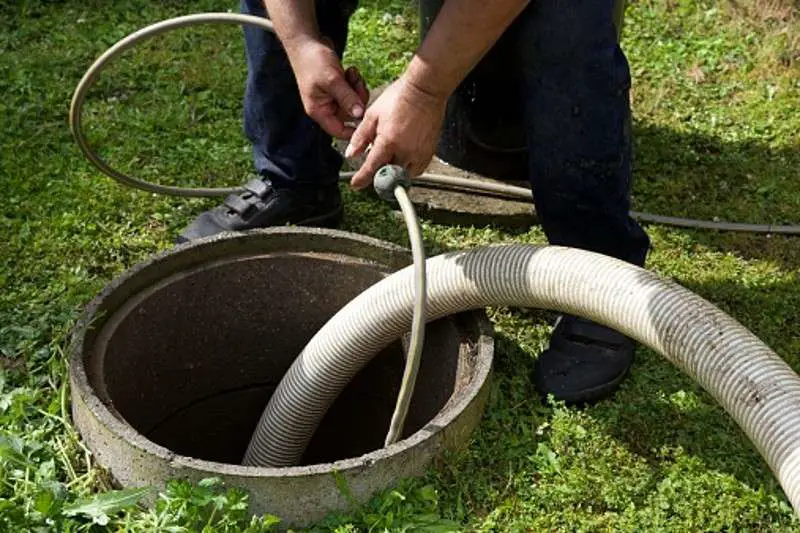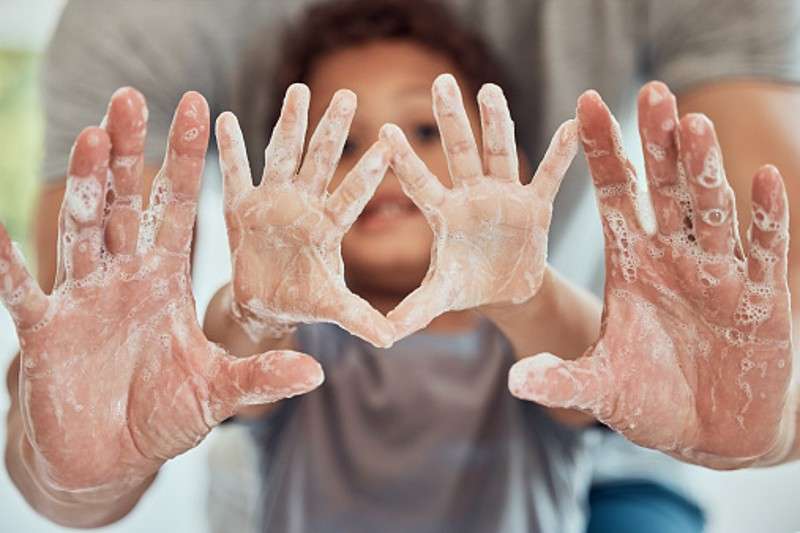When it comes to cleaning and disinfecting the surfaces in your home, you want a product that is both effective and safe. One commonly used brand for this purpose is Scrubbing Bubbles. But if you have a septic system, you may wonder: can I use Scrubbing Bubbles safely? We’ll discuss some considerations when using this product with a septic tank.
Understanding Septic Tanks: Basic Overview and Functioning

Septic tanks are underground storage containers for wastewater from home. The tank allows the solids in the wastewater to settle and decompose while other liquids pass into a drainage field. For this process to work properly, it’s important to avoid putting any chemical or bacterial agents down the drain that could inhibit the natural digestive process of your septic system.
What is Scrubbing Bubbles: A Brief Introduction to the Product

Scrubbing Bubbles is a bathroom cleaner and disinfectant that uses an active ingredient called “d-limonene” to kill germs and remove dirt. It can be used on various surfaces, including toilet bowl cleaners, sinks, tubs, countertops, floors, and tiles. The product comes in aerosol sprays and gels designed to cling to vertical surfaces, toilet rings, and other hard-to-reach areas.
Can Scrubbing Bubbles Be Used in Septic Tanks? What the Manufacturer Says
The manufacturer of Scrubbing Bubbles, S.C Johnson & Son, states that its product can be used on a septic system as long as it is used according to the directions on the label. The directions state that all excess cleaner should be wiped away and rinsed with plenty of water after use. This will help prevent any build-up or clogging of your septic tank or drainage field.
Scrubbing Bubbles can be safely used in septic tanks if the product is used according to the instructions provided by the manufacturer and all residue is wiped off afterward. However, avoiding using too much is important. Overusing the product can lead to an accumulation of residue that could clog your septic tank or drainage field, leading to costly repairs.
Harmful Chemicals in Cleaning Products: Risks to the Septic System
Many cleaning products, including Scrubbing Bubbles, contain chemicals that can harm the environment and your septic system. These chemicals include surfactants (which help the product stick to surfaces), solvents (which dissolve dirt and grease), and preservatives (which keep the product from spoiling). These ingredients can hurt your septic system if they are improperly disposed of or used too much.
When it comes to using Scrubbing Bubbles with a septic tank, it is important to use the product according to the directions provided by the manufacturer. It’s also important to avoid overusing the product or introducing any other chemical agents into your septic system, following hurt its functioning.
Ingredients in Scrubbing Bubbles: Are Thfe for Septic Tanks?
The active ingredient in Scrubbing Bubbles is called d-limonene, and it has been deemed safe for use in septic systems. In addition, the other ingredients used in the product, such as surfactants, solvents, and preservatives, are also generally considered safe for use with septic tanks.
However, it’s important to remember that these ingredients can still negatively affect your septic system if they are improperly disposed of or used too much. To avoid any problems, it’s best to follow the directions provided by the manufacturer and only use the remembered.
Paint thinners and solventsnegatively affect septic tanks, as they can kill beneficial bacteria and disrupt the septic system.
Alternatives to Scrubbing Bubbles: Other Safe Cleaning Products for Septic Systems
Many options are available if you are looking for alternative cleaning products to use with your septic system. Some of these include:
• Baking soda and vinegar – This combination is a natural way to clean surfaces, effectively kills germs, and removes dirt.
• White vinegar – Vinegar can also be used as an all-purpose cleaner safe for septic systems.
• Castile soap – Castile soap is a plant-based product that can be used as a multi-purpose cleaner and disinfectant.
• Borax – Borax is another natural cleaner with antibacterial properties that can help remove tough hard water stains. It should be used sparingly, however, with antibacterial properties that systems.
When it comes to using cleaning products with a septic system, it’s important to choose products that are safe for use and follow the instructions provided by the manufacturer. By taking these precautions, you can keep your septic system running smoothly and avoid costly repairs due to clogging or buildup of residue.
Non-toxic cleaning products can help protect your septic system from damage and keep it running smoothly.
Best Practices for Septic Tank Maintenance: Tips for Preventing Damage
Several steps can be taken to help protect your septic tank and keep it running smoothly. These include:
• Regular Maintenance – If you own a septic tank, it is important to have it inspected and serviced by a professional regularly. This will ensure that any problems with the system are identified early on and that the necessary repairs or maintenance can be carried out promptly.
• Proper Disposal of Waste – It’s important to dispose of all waste materials, such as food scraps, grease, oil, chemicals, and other hazardous materials. These items should never be poured down the drain or flushed down the toilet paper, as this can lead to clogged pipes or buildup in the septic tank.
• Control Water Usage – It’s also important to be mindful of how much water is used daily. Excessive amounts of water can strain the system and lead to backups or overflows.
• Avoid Overuse of Cleaning Products – As mentioned, it is important to use cleaning products as directed and avoid overusing them, as this can cause damage to the septic system.
With regular inspections and proper care, you can extend the life of your septic tank and protect your home from any costly repairs down the road.
Using a toilet cleaning gel is another safe way to clean and disinfect your toilets without damaging the septic system.
For those looking for a more convenient way to maintain their septic tank, continuous clean drop-ins products can be an excellent option.
FAQS
Are Scrubbing Bubbles safe for a septic system?
Yes, Scrubbing Bubbles is an effective cleaner when used according to the instructions provided by the manufacturer, making it a safe choice for those with septic tanks.
Is Scrubbing Bubbles mega shower foamer safe for septic tanks?
Yes, Scrubbing Bubbles Mega Shower Foamer is safe for use in septic tanks when used according to the instructions provided by the manufacturer. It is important to note that chlorine bleach should be choosinganks as it can damage the system.
What important cleaning products can I use with a septic tank?
When it comes to cleaning products, choosing ones that are safe for use with your septic tank is important. Safe cleaning products include those specifically formulated for septic tanks or natural alternatives such as baking soda and vinegar. It is also important to read the instructions provided by the manufacturer of any product you plan on using to ensure that it is safe for your septic tank. Products such as chlorine bleach, disinfectants, and harsh chemicals should be avoided as they can cause damage and buildup in the septic system.
Are Mr bubbles safe for septic systems?
Yes, Mr. Bubbles is safe for use in septic tanks when used according to the instructions provided by the manufacturer. It is important to note that chlorine bleach should not be used with septic tanks as it can damage the system. It is important to follow the instructions provided by the manufacturer of any product you plan on using to ensure that it is safe for your septic tank. Products such as chlorine bleach, disinfectants, and harsh chemicals should be avoided as they can cause damage and buildup in the septic system.
Is Dawn dish soap safe for septic?
Yes, Dawn dish soaps is safe for use in septic tanks when used according to the instructions provided by the manufacturer. It is important to note that chlorine bleach should not be used with septic tanks as it can damage the system. It is important to follow the instructions provided by the manufacturer of any product you plan on using to ensure that it is safe for your septic tank. Products such as chlorine bleach, disinfectants, and harsh chemicals should be avoided as they can cause damage and buildup in the septic system.
How do you clean a shower with a septic tank?
When cleaning a shower with a septic tank, using safe products for your system is important. Safe cleaning products include those specifically formulated for septic tanks or natural alternatives such as baking soda and vinegar. It is also important to read the instructions provided by the manufacturer of any product you plan on using to ensure that it is safe for your septic tank. Products such as chlorine bleach, disinfectants, and harsh chemicals should be avoided as Cathey may sometimes end up in the septic system.
Conclusion
Scrubbing Bubbles products are not typically rented for use with a septic tank, but they may sometimes be safe. If you’re unsure whether a septic is safe, consult your local plum on the marketer or the manufacturer for more information. Many alternative products are specifically designed to be septic tank safe on the market, so it’s definitely worth investigating yourself before investing in a potentially damaging product. The main takeaway is if you have a septic system, take a few moments to research the cleaning products you choose to ensure they won’t harm your tanks and pipes.


